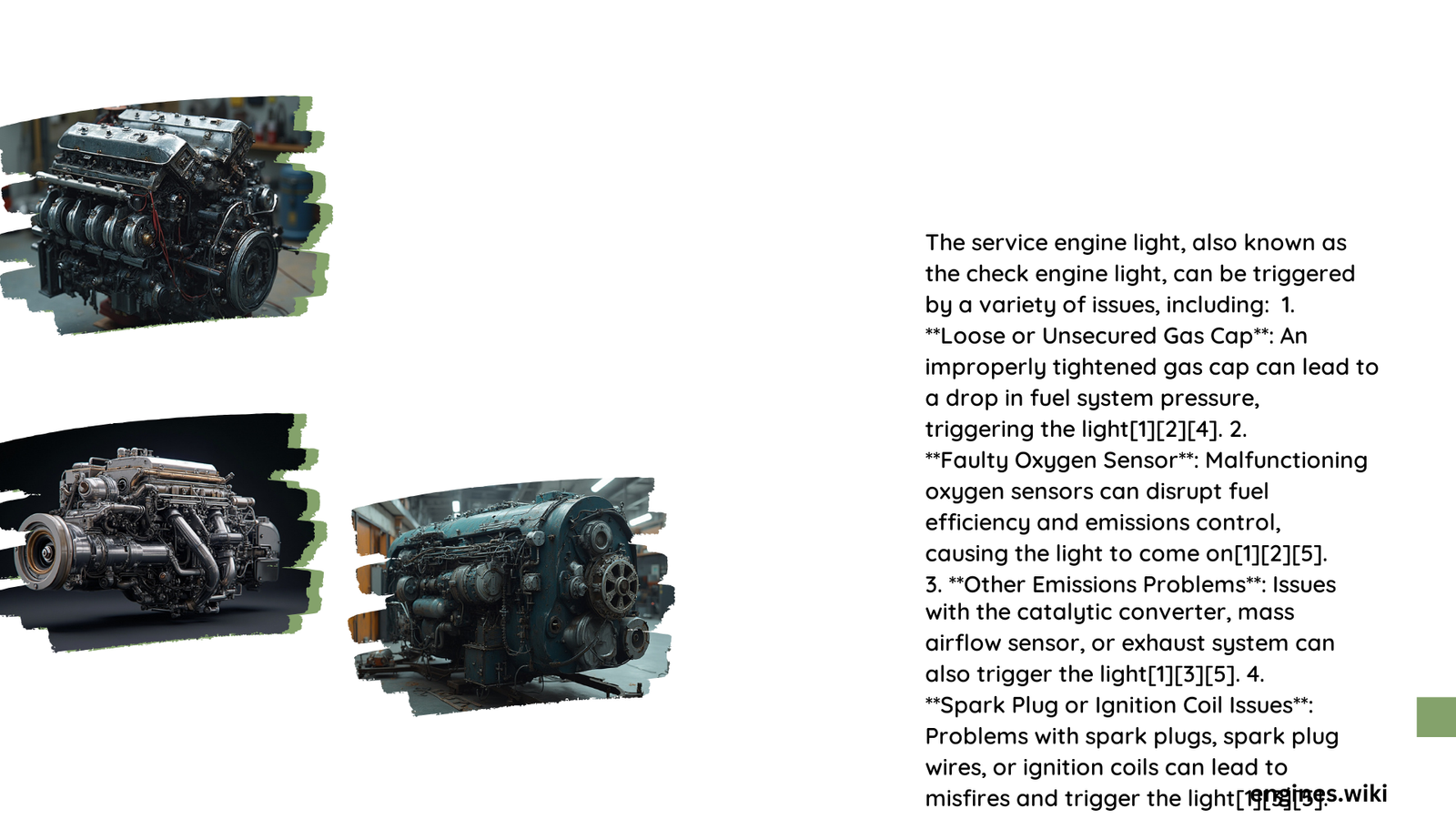Modern vehicles are equipped with sophisticated diagnostic systems that monitor critical engine parameters, alerting drivers to potential issues through the service engine light. When this warning illuminates, it signals that your vehicle’s onboard computer has detected a problem that requires immediate attention. From sensor malfunctions to fuel system irregularities, multiple factors can trigger this crucial warning indicator, potentially preventing more serious and costly damage if addressed promptly.
What Causes Service Engine Light to Activate?
How Do O2 Sensors Trigger Warning Lights?
O2 sensors play a critical role in monitoring exhaust gases and maintaining optimal engine performance. When these sensors malfunction, they can cause the service engine light to illuminate due to several key reasons:
- Inaccurate Oxygen Measurement: Sensors fail to provide precise oxygen level readings
- Disrupted Air-Fuel Ratio: Incorrect data transmission to engine control unit
- Potential Error Codes: P0130 to P0167 range indicating specific sensor issues
O2 Sensor Failure Statistics
| Sensor Type | Average Replacement Cost | Typical Failure Frequency |
|---|---|---|
| Upstream Sensor | $175 | Most Common |
| Downstream Sensor | $200 | Less Frequent |
What Role Does Mass Airflow Sensor Play?
The Mass Airflow (MAF) sensor is another critical component that can trigger the service engine light. Its primary functions include:
- Measuring incoming air volume
- Calculating precise air-fuel mixture
- Transmitting data to engine control unit
Common MAF Sensor Warning Signs:
– Rough engine idling
– Decreased fuel efficiency
– Erratic acceleration
– Diagnostic trouble codes P0100 to P0103
Can a Loose Gas Cap Activate Warning Light?
Surprisingly, something as simple as a loose gas cap can activate the service engine light. This occurs through:
- Compromised evaporative emissions system
- Potential vacuum leaks
- Disruption of fuel system pressure
Quick Fix Checklist:
– Ensure gas cap is tightened completely
– Check for visible damage to cap
– Verify proper sealing
What Are Complex Sensor Interaction Triggers?
Beyond individual sensor issues, complex interactions can also trigger service engine lights:
- Interconnected System Failures: Multiple sensor miscommunications
- Environmental Factors: Extreme temperatures affecting sensor performance
- Age-Related Degradation: Cumulative wear on vehicle components
Diagnostic Approach to Service Engine Light

How to Respond When Light Appears?
- Don’t Panic: Not all warnings indicate severe problems
- Check Basic Issues: Loose gas cap, visible damage
- Use OBD-II Scanner: Read specific error codes
- Consult Professional: For complex diagnostic needs
Prevention Strategies
- Regular vehicle maintenance
- Annual sensor inspections
- Timely replacement of aging components
- Use high-quality fuel and parts
Technical Insights
The service engine light represents a sophisticated communication system between your vehicle’s computer and critical mechanical components. Modern vehicles use complex algorithms to detect even minor performance deviations, ensuring optimal functionality and preventing potential long-term damage.
Conclusion
Understanding what triggers the service engine light empowers vehicle owners to take proactive maintenance steps. While some issues are minor, others can indicate significant mechanical challenges requiring professional intervention.
